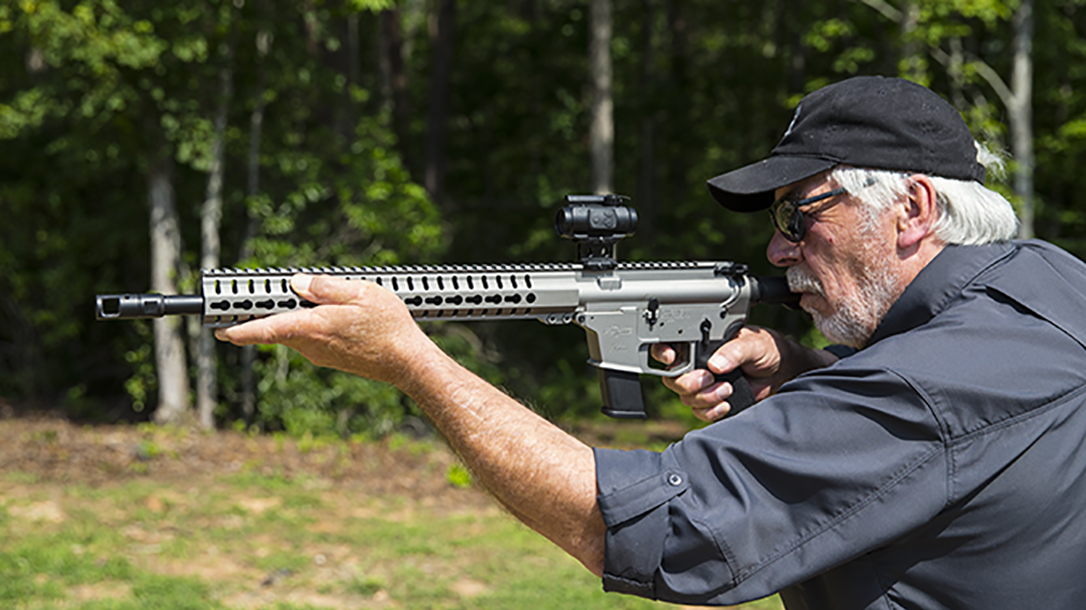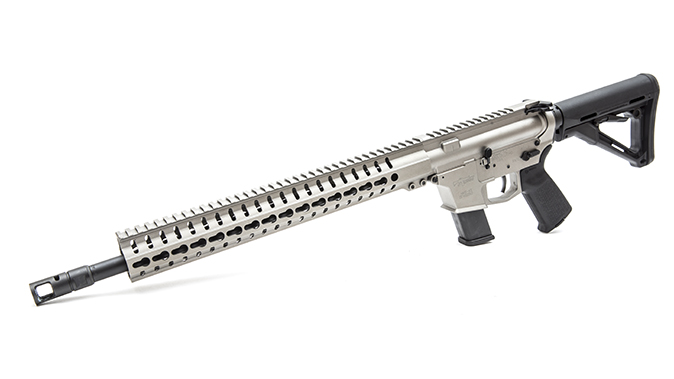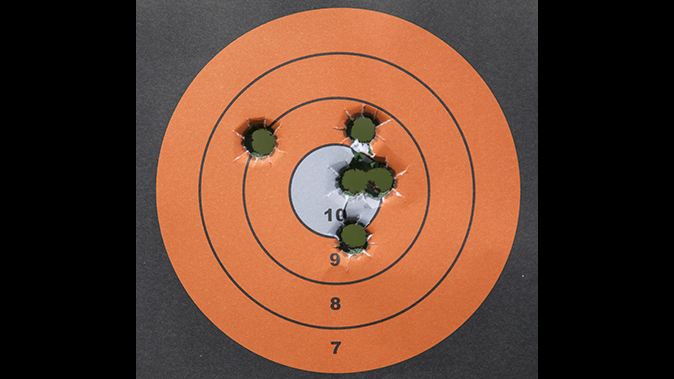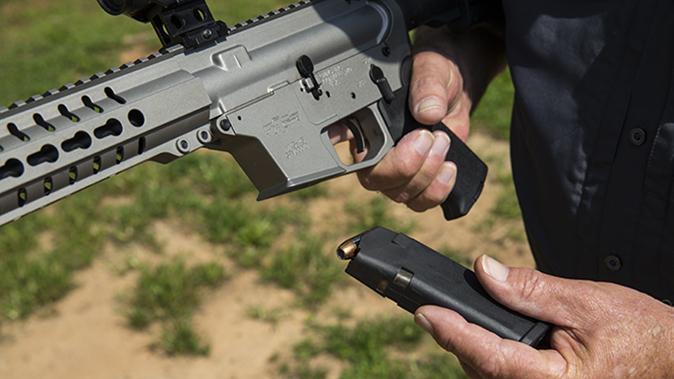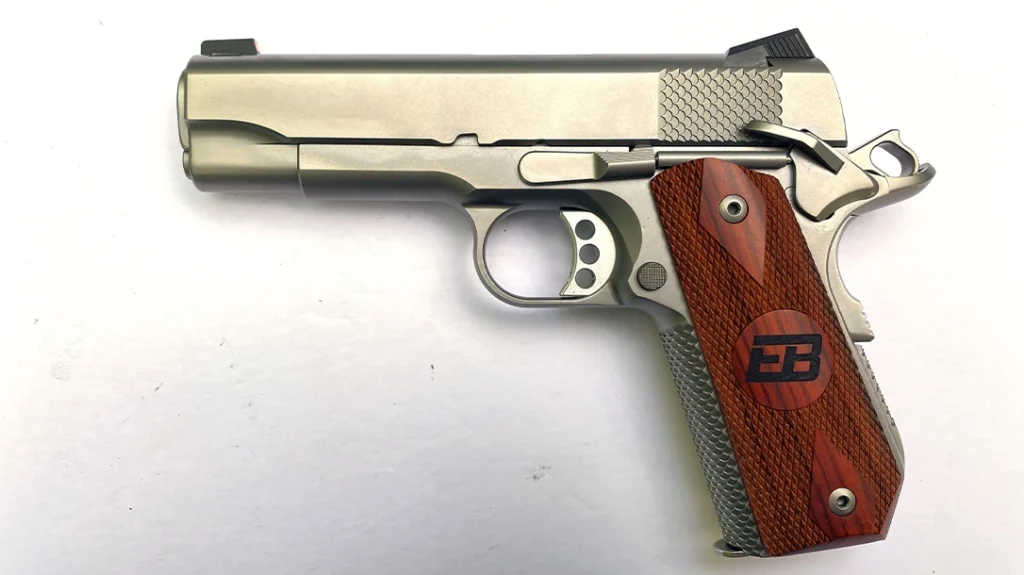One particular style of firearm that has been available for more than a century and a half is the pistol-caliber rifle or carbine. Shooters have long enjoyed using rifles that fire some of their favorite pistol cartridges because of the ease of use or convenience in doing so. In more modern times, it barely took 13 years after John Browning’s .45 ACP round was developed before John Thompson designed a submachine gun around it. Because of its utility and effectiveness, the Thompson submachine gun turned out to be one of the most popular weapons during World War II.
One particular style of firearm that has been available for more than a century and a half is the pistol-caliber rifle or carbine. Shooters have long enjoyed using rifles that fire some of their favorite pistol cartridges because of the ease of use or convenience in doing so. In more modern times, it barely took 13 years after John Browning’s .45 ACP round was developed before John Thompson designed a submachine gun around it. Because of its utility and effectiveness, the Thompson submachine gun turned out to be one of the most popular weapons during World War II.
Despite all of that, the debate still rages back and forth about the proper place and effectiveness of pistol-caliber rifles. The market doesn’t pay attention to talk, however. If there’s enough demand for a specialty product, there is bound to be a company that will step in and meet that demand. One such company that continues to push the boundaries with its offerings is CMMG, and its new “Guard” series MkG carbines in .45 ACP illustrates the market’s desire for such products.
Advertisement — Continue Reading Below
Building on the popularity of Glock pistols, CMMG decided to create its own .45 ACP carbines that accept Glock magazines. While 9mm and .40 S&W carbines are common on the market, the .45 ACP doesn’t get quite as much love as it did in the past. CMMG is helping to remedy that situation with these rifles, which accept 13- and 10-round magazines from both G21s and G30s, respectively.
There are some .45 ACP carbines on the market right now, and there have been in the past as well, so CMMG isn’t exactly breaking new ground here. But the company is combining the popularity of Glock pistols with the popularity of the AR platform, all with some advanced tech for those users who believe in the pistol-caliber carbine concept.
The Argument
Though pistol-caliber rifles are decried by an avid group of naysayers, I believe there are some perfectly legitimate reasons for this type of solution. Besides, there are plenty of firearms on the market right now that people like that don’t really have a legitimate purpose. And yet this doesn’t keep people from buying them.
Advertisement — Continue Reading Below
The first and most obvious argument is the interchangeability of not only ammunition, but also magazines between a pistol and carbine. For some end-users, this is a tactical consideration that serves them well within the context of how they intend to use their particular carbine.
Certainly, the .45 ACP round is not a long-distance caliber, but within 100 yards, it will generally do the job needed for defensive work. And for the vast majority of civilian/law enforcement incidents, defensive encounters are going to be much closer. What the pistol-caliber carbine does is provide a longer sight radius and more stable platform for the rounds already in use by the operator. It bumps up the velocity of the round, thereby increasing the effectiveness, and it negates the need to carry different types of ammunition.
Advertisement — Continue Reading Below
Additionally, a pistol-caliber carbine is cheaper to shoot than a standard rifle. Using CMMG’s MkG models lets the user train more often and get used to the AR platform while increasing their skill level and marksmanship. Further, this concept makes high-quality ammunition more accessible to those on a very strict budget as well.
Also, there are groups of people (young adults, elderly, disabled, smaller-statured, etc.) who are not as capable of firing a standard rifle caliber. So having the option of using a pistol-caliber carbine makes more sense. Pistol calibers are much softer shooting, have less muzzle blast and typically will not overpenetrate inside a dwelling like a rifle caliber might, given the right load selection is made.
The Goods
CMMG’s .45 ACP offering is a sleek package, reflecting professional craftsmanship and attention to detail in its execution. It is light in the hand, weighing only 5.8 pounds unloaded, making it extremely portable and maneuverable.
Advertisement — Continue Reading Below
The carbine I received (the MkG DRB) is a mid-level configuration with an MSRP of $1,400. The mid-level version is one step and $100 up from the basic model, and includes Magpul furniture such as the six-position CTR stock and MOE grip. Both the basic and mid-tier models sport a mil-spec, single-stage trigger. The test sample was also finished in CMMG’s titanium Cerakote, which adds $150 to the price over the standard hardcoat anodizing. The top-end configuration includes a Geissele SSA trigger and Magpul furniture, and has an MSRP of $1,600.
The 1-in-16-inch-twist barrel on this MkG rifle is 16.1 inches long, but CMMG makes a pistol version of the MkG with an 8-inch barrel. The carbine also includes CMMG’s RKM14 handguard, which has KeyMod attachment points as well as QD sockets on both sides for attaching a sling. The muzzle sports .578-28 threading, and CMMG includes its own SV brake.
Something new with the MkG rifle is CMMG’s patent-pending radial delayed-blowback operating system. Rather than a straight blowback system, the MkG relies on a bolt that rotates and unlocks to slow the action down long enough to cycle .45 ACP rounds reliably. According to CMMG engineers, both direct-impingement and straight-blowback systems were tried, but they did not provide the reliability they wanted and achieved with this new operating system.
Advertisement — Continue Reading Below
Along with the carbine, CMMG also includes an action tuning kit. This kit is a series of weights and roll pins to be inserted into the bolt carrier group when running different types of ammunition. The action tuning kit is allows users to tune the action themselves for times when they are running the MkG suppressed, using standard loads or firing +P ammunition. The kit is very straightforward and uncomplicated. If the user has the acumen to remove the bolt carrier group, then using the kit should be no problem at all.
Sentinel Testing
I’m a fan of pistol-caliber carbines in the right context, so I’m always down for stepping up to the firing line with one. Having the Guard at the range was more than just having a little fun. Since I own both a G21 SF and a G30, I really wanted to see what the MkG carbine could do, as this might be an answer to my own dilemma. I’ve wanted a carbine that uses .45 ACP Glock magazines for quite some time now.
To get the show rolling, I used Sig Sauer’s 230-grain Elite Performance FMJs for the initial break-in period. The MkG felt good in my hands, and the lack of significant recoil really surprised me. There might be something to that radial delayed-blowback system, because the MkG was an extremely soft-shooting carbine. In fact, it shoots as softly as a 9mm carbine I have that works off a straight-blowback system. The new operating system definitely helps tame the recoil of the larger .45 ACP round.
Advertisement — Continue Reading Below
While the trigger won’t be mistaken for a match-grade model, it wasn’t too bad at all. It broke at an average of 6.13 pounds according to my Lyman digital trigger scale. That’s actually not a bad weight for a rifle of this type, especially one being used for defensive purposes. It affords a bit more safety than an extra-light trigger would offer.
Since the .45 ACP is more of a short-distance round, I tested the carbine’s accuracy at 50 yards using a Lucid M7 reflex sight. This is a non-magnified 1X red dot—the kind of sight that most users will likely equip the MkG with. On hand for testing was Winchester’s 230-grain PDX1 and Defend JHP loads as well as Sig’s 230-grain Elite V-Crown JHP ammo.
Advertisement — Continue Reading Below
CMMG’s MkG DRB did not disappoint in terms of performance. Out of all the groups fired with the various ammunition, the average spread was only 2.17 inches. The best average group was turned in by Winchester’s PDX1 Defender load at just 1.83 inches. The PDX1 ammunition also had the best single group with a spread of 1.5 inches.
This is excellent accuracy, especially when you consider that no magnification was used with the sight, and it’s tough to see 1 inch at 50 yards. Could I have gotten tighter groups with a scope? Sure, but to what end? Is this a rifle that’s really going to have a magnified optic on it? I’d say no to about 99 percent of the potential use cases. So, testing it with the Lucid M7 reflex sight gives us real-world results as it would be used in the field.
The reliability was good overall. The MkG did stutter a couple of times during the first 50 rounds with a couple of failures to feed, but everything smoothed out after that. Both G21 and G30 magazines worked well with the carbine, though they might not offer the capacity some users would like. For those who might want more in the capacity department, both KRISS and SGM Tactical manufacture extended-capacity magazines that hold 25-plus rounds instead of the standard 13 rounds of the G21 magazines.
Advertisement — Continue Reading Below
Defensive Pros
The MkG DRB checks the boxes for both form and function quite handily. It comes in an attractive package that’s also host to some innovative technology that works as advertised. CMMG has married the best of both worlds by combining the effectiveness and ubiquity of both the Glock and AR platforms—and the process works well. Fans of pistol-caliber carbines will be happy to see CMMG’s new Guards on the market, especially since they’re chambered for the oft-ignored .45 ACP and uses the readily available Glock 21 magazines.
While the argument rages on, some of us will quietly go about with our purchases. There’s no need to justify or drag it out. We know what we want and like. I have been a pistol-caliber carbine fan for years, and after trying out the CMMG MkG DRB, I still am—and more so than ever.
If you’re looking for a soft shooter that’s cheaper to run than a standard AR—something that can serve as an excellent AR trainer while being a solid tactical decision over a full rifle caliber—you should most definitely check out CMMG’s Guard series. These carbines are winners that will guard you and your family well.
CMMG MkG DRB Specs
| Caliber: .45 ACP |
| Barrel: 16.1 inches |
| OA Length: 32.5 inches |
| Weight: 5.8 pounds (empty) |
| Stock: Magpul CTR |
| Sights: None |
| Action: Blowback-operated semi-auto |
| Finish: Titanium Cerakote |
| Capacity: 10+1, 13+1 |
| MSRP: $1,550 (as tested) |
CMMG MkG DRB Performance
| Load | Velocity | Accuracy |
|---|---|---|
| Sig Sauer 230 V-Crown JHP | 995 | 2.25 (Average), 2.10 (Best) |
| Winchester 230 Depend JHP | 978 | 2.43 (Average), 1.81 (Best) |
| Winchester 230 PDX1 Defender | 1,060 | 1.83 (Average), 1.50 (Best) |
*Bullet weight measured in grains, velocity in fps by chronograph and accuracy in inches for three 5-shot groups at 50 yards.
For more information, visit cmmginc.com.
This article was originally published in “Tactical Weapons” November/December 2017. To order a copy and subscribe, visit outdoorgroupstore.com.
